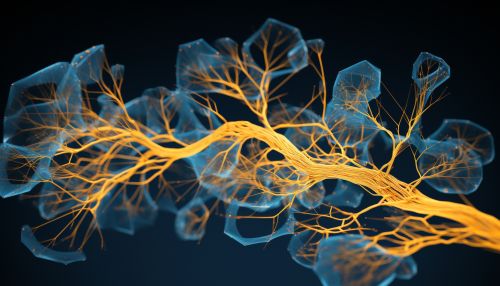Peripheral Nervous System
Overview
The peripheral nervous system (PNS) is a part of the nervous system that consists of the nerves and ganglia outside of the brain and spinal cord. The main function of the PNS is to connect the central nervous system (CNS) to the limbs and organs. Unlike the CNS, the PNS is not protected by the bone of spine and skull, or by the blood–brain barrier, which leaves it exposed to toxins and mechanical injuries.


Structure
The peripheral nervous system is divided into two main subsystems: the somatic nervous system and the autonomic nervous system. The somatic nervous system is responsible for coordinating the body's movements, and for receiving external stimuli. It is the system that regulates activities that are under conscious control. The autonomic nervous system is further subdivided into the sympathetic and parasympathetic nervous systems.
Somatic Nervous System
The somatic nervous system consists of peripheral nerve fibers that send sensory information to the central nervous system and motor nerve fibers that project to skeletal muscle. The somatic nervous system is responsible for voluntary movement of the muscles and organs and reflex movements. In the somatic nervous system, nerve fibers of the motor neurons lead to the skeletal muscles.
Autonomic Nervous System
The autonomic nervous system is the part of the peripheral nervous system that acts as a control system, maintaining homeostasis in the body. These activities are generally performed without conscious control. The autonomic nervous system has two subdivisions: the sympathetic nervous system and the parasympathetic nervous system.
Sympathetic Nervous System
The sympathetic nervous system is responsible for the body's response to stressful situations. It is often referred to as the "fight or flight" system. When the body is stressed, the sympathetic nervous system contributes to adjustments such as increased heart rate and blood pressure.
Parasympathetic Nervous System
The parasympathetic nervous system, sometimes referred to as the "rest and digest" system, controls homeostasis and the body at rest. It is responsible for the body's "rest and digest" function, such as slowing heart rate, increasing intestinal and gland activity, and relaxing sphincter muscles in the gastrointestinal tract.
Function
The peripheral nervous system's main task is to relay information from the CNS to the rest of the body and vice versa. It is essentially the communication link that connects all parts of the body to the CNS, allowing for coordinated functioning of the body.
Sensory Function
The sensory function involves collecting information from sensory receptors that monitor the body's internal and external conditions. These sensory signals are then carried to the CNS via afferent neurons.
Motor Function
The motor function involves transmitting signals from the CNS to effectors (muscles, glands) in the body. These signals are carried via efferent neurons. The motor function is divided into the somatic and autonomic systems.
Disorders
Disorders of the peripheral nervous system can result in various conditions. These may include peripheral neuropathy, Guillain-Barré syndrome, Charcot-Marie-Tooth disease, and more. These disorders can result in symptoms such as pain, numbness, weakness, or alterations in body functions.
